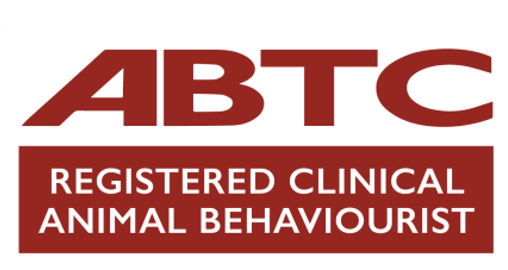A question I often get asked is “Can dogs and cats get along?” it’s a common misconception that the two species cannot live happily ever after within a home. Whether raising a puppy with a resident feline or adding an adult dog into the mix, a little management goes a long way toward fostering a peaceful co-existence.
The way the two species are introduced to each other, their age and the pet’s previous experience with the other species will impact their behaviour. When introducing your dog to your cat, it’s vital to create a calm and controlled situation where the two can accept one another and a positive association can be built.
“That’s all well and good Hanne…” I hear you cry, “…but how do I stop my dog chasing the cat?”
Firstly, you need to look at what is reinforcing the behaviour in the first place – is it the adrenaline/endorphin rush of the chase? Most dogs like to chase whether it’s a ball, a bird flapping in the distance or unfortunately, the resident cat. That ‘natural high’ is the same for us humans, that’s why many people love to take part in extreme sports.
So, how do you solve the problem?
Two ways; through practical management and desensitisation and counter conditioning.
Let’s look at practical management first…
- Create a ‘safe-haven’ for your cat by stalling a baby gate in one room of the house. This allows the dog and cat to familiarise themselves with each other without the dog being able to engage in a chase. And, it also prevents the dog pillaging the litter tray and cat food dish. The ‘safe-haven’ should ideally be away from busy areas of the house, so the cat has somewhere to retreat to.
- Consider purchasing a pheromone releasing product for your cat (e.g.) Feliway – this is a synthetic copy of the feline facial pheromone deposited by cats when they rub their cheek on objects in the environment. These marks create a sense of familiarity and security within their environment.
- Create an activity centre/climbing tree using scratch posts and soft platforms for rest areas. This helps your cat scratch in a chosen spot and be high up, enabling Kitty to exercise his innate scratching and climbing behaviours away from the dog.
- Gently groom your cat, this helps build trust and helps the cat-owner bond. Do this when your dog is resting.
- Pop some lavender oil under the collar of your dog to help promote calmness.
- Consider contacting a trained professional to assist you further. Email us at [email protected]
Now let’s look at desensitisation and counter conditioning.
The aim of counter conditioning in this case is to change the reaction to the cat. Rather than your dog seeing your cat and thinking “Yippeee – chase time”, you want him to think “Yippee – food time”. This process is about creating a calm internal state through the use of food, because if the dog is thinking “food” he cannot think “chase” at the same time, the two internal states are simply incompatible.
- Firstly, get the food your dog adores! This might be cooked chicken, liver-cake, cheese or steak. Have this cut up into small cubed pieces and have plenty of them. Make sure your dog is hungry, so he’ll be really interested in the food.
- Go into an area where your dog is aware of the cat but not very motivated to chase Kitty, for example the cat is in his carrier in the kitchen.
- Have someone bring the cat into the area to where you and your dog are. He may momentarily look at the cat as your helper brings Kitty into the room. If so, flick your tongue to create a ‘click’ sound or say his name for attention/ask for a “watch me” and when he turns look at you treat him in quick fire succession with the food.
- If your dog is fixated on the cat, you may need to pop the food on his nose and move this slowly up to your eye to lure him into making eye contact with you then treat.
- If your dog is focused solely on the food, still treat, treat, treat.
- Repeat this process with the food, marking the good behaviour which in this case is calmly sitting or standing with you and not chasing the cat. Do this in short sessions approximately 2 to 3 minutes at a time, then take the cat out of the room and ignore your dog.
- Then bring the cat back in and repeat the process above.
- Once your dog is successfully looking at the cat then you for food, you can move onto the next step.
- Get your helper to hold the cat and walk into the room where you and your dog are waiting and again have a quick fire treat session. Keep the rewards fast and constant so your dog literally doesn’t have time to think, just to swallow! Intersperse these sessions with removing the cat and ignoring the dog.
- As you progress, you can raise the level of challenge for your dog by having the cat held by your helper and walked around the room – to being on a harness and lead (if your cat is used to one), then to the helper running with the cat and so on.
- You may be able to move onto having the cat get closer and closer to your dog. However, if he goes to chase the cat, you’ve raised the level of difficulty too fast. Do not increase the level of challenge for your dog unless he is totally focused on the ‘tongue click’ or “name/watch me” then treat and ignoring the cat except for the odd quick glance. Note: If you have clicker trained your dog simply use the click and treat rather than your tongue-click sound or cue word.
What to avoid…
Yelling or punishing your dog ‘after the event’ will not stop him from chasing Kitty. You will simply add chaos to chaos. However, by following the suggestions above, being proactive in your approach rather than waiting for something to happen, you will help set your dog and cat up for success, leading to a more peaceful co-existence.
Learn more about our classes

Get Hanne's Book
Playing With Your Dog will help any dog owner work out the games that are best suited for their pet to play throughout his life, from puppyhood to old age. The book also shares some tricks for all ages, group activities, and recommended toys that dogs will enjoy.
























